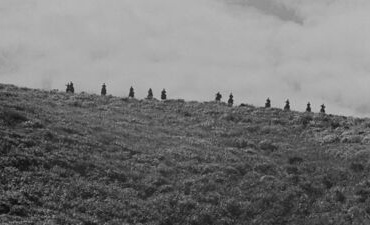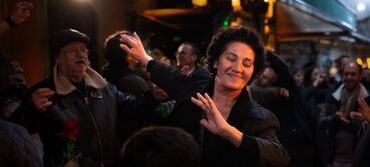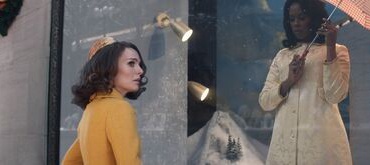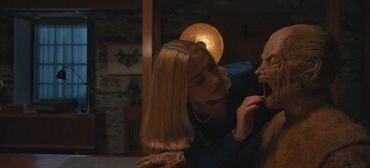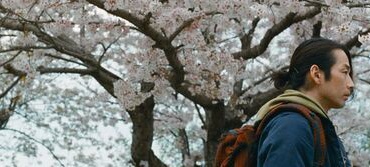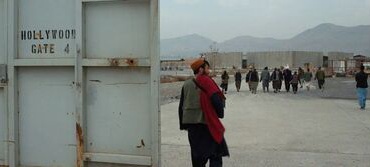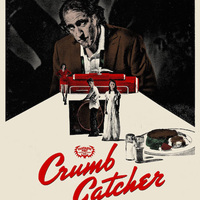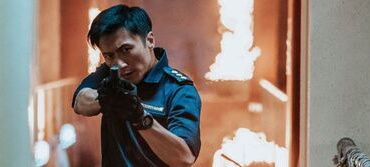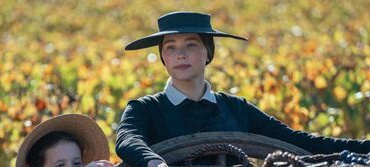
Mounted horses bifurcate the hazy horizon, armed silhouettes in furious charge dash towards a village beneath them; in seconds, we see above and below, the predators and their prey, a telephoto lens collapsing space to signal their invasion.
Take this village too?
Take it! Take it!
Not so fast!
We just took their rice last fall.
They’ll have nothing now.
Very well.
We’ll return when that barley’s ripe!
It’s only a matter of time. They will come back. They must hire samurai — seven.
Speaking on the timeless power of “Seven Samurai,” filmmaker Jane Campion declared “I love it for its balance of humor, drama, and its deep affection for our noble and flawed natures.” With his landmark classic, Japanese writer-director Akira Kurosawa birthed the modern adventure film, and as it hits its 70th anniversary, it prevails as a thrilling, effervescent, yet boldly sullen epic. Between the volleys of arrow-fire and fraught duals, Kurosawa’s made a humanist masterpiece of our best and worst selves, towering above its many imitators nearly a century later. It is said to be among the most influential movies of all time. Without it, we not only wouldn’t have “The Magnificent Seven” (there have been more than a dozen straight remakes) or “Star Wars.” The influence of “Seven Samurai” is so generationally seismic, it’s as though it has penetrated the nitrate matter of film itself.

“Seven Samurai” contains dozens, possibly hundreds, of cinematic techniques that revolutionized how movies tell their stories. To summarize each of them is a Sisyphean task; in trying to list them all, you would only find another. I’ll do my best. To start, Kurosawa gave the kiss of life to outdated samurai archetypes, giving them a soul. He is the master of when to go wide, arranging actors with paint-brush precision (the villagers hunched in a demure circle, sitting in terror of their imagined end), and when to use the close-up, reserved for maximum impact (the village elder commanding them to find “hungry samurai”). Kurosawa mastered the disciplined practice of setup and payoff, and the way James Cameron stages the first half of his movies as a careful propping up of dominoes — locations, props, character motivations — only to knock them down in the climax, can be directly linked to “Seven Samurai.”
He perfected when to keep the camera steady, as in the famous duel, to accentuate the movement in-frame. And likewise, when to move it, to create momentum. Kurosawa was among the first to intercut footage at differing speeds, using slow-motion to punctuate the brutality of key deaths while the onlookers gazed in the normal 24 frames per second, an effect as central to “Hard Boiled” and “300” as to anime like “Attack on Titan.” Later, “Mad Max: Fury Road” will alternate its framerate shot to shot. His realistic handling of action would change action film forever, with Kurosawa’s cameras racing to keep up with his fighters rushing between the edges of the 1.33:1 frame, as though his multiple cameras were breaking a sweat.
In Kurosawa, his villains frequently die with the same frank brutality as his heroes, finding equality in death, a device Steven Spielberg subsequently used in “Saving Private Ryan.” Motifs are visually reinforced, subverted, and repeated again, Sergei Eisenstein’s rules of Russian montage looms over the 3.5 hour adventure epic. As in the early Westerns, heroes usually move on screen from left-to-right while villains descend right-to-left, yet to show the moral decline of the samurai class, he stages two montages so the samurai move both directions, as if good and evil have become a blur. He knows when to hold his shots and when to unleash a flurry of rapid edits, as when six of the seven warriors rush towards screen-right in a series of six percussive mid-motion match-cuts, as if to layer one over the other, the individual and the group as one. “Seven Samurai,” like all of Kurosawa’s great films, would be called fearlessly experimental if it didn’t flow with the steady exuberance of one of Japan’s woodland streams.
Kurosawa’s own influences are both obvious and contested. They are, at once, refreshingly cosmopolitan and distinctly Japanese, a combination that simultaneously earned him a reputation for “not being Japanese enough” while also priming his films for easy international export. It was he, not his contemporaries Yasujirō Ozu or Kenji Mizoguchi, who became the first Japanese to break through onto the global scene.

He pulled equally from the tragedies of Shakespeare and Noh Theater, the moral psychology of Russian and Japanese literature, the formal might of D.W. Griffith and Eisenstein, and the seedy bowels of film noir. And as any passing Kurosawa-head knows, the director was deeply smitten with the films of John Ford. Almost all of his films, whether his crime pictures or samurai epics, use this genealogy of influence to wrangle with the social unease and search for meaning in post-war Japan. His films ask, “how do we live, when so much has been lost?” giving an existential anchor to stories like when a rookie cop’s gun goes missing, a ronin wanders to town, or a village needs protecting. Arguably no filmmaker welcomed so many cultural traditions as Kurosawa, making it seem inevitable his films, especially “Seven Samurai,” would go on to influence a near-century of future filmmakers as he inspired others to do the same.
You feel the weight of all these influences on “Seven Samurai,” starting with the plot which on the surface is disarmingly simple, but deceptively works as a complex morality play. We meet an impoverished village beset by bandits, and they seek a group of warriors to defend their town from the oncoming attackers. The head of this warrior troupe is Kambei (Takashi Shimura), a wise but weary ronin (a samurai with no master) who recruits a diverse ensemble that ranges from the lethal swordsman Kyūzō (Seiji Miyaguchi) to the lovelorn aspiring samurai Katsushirō (Isao Kimura), who falls for a villager’s daughter.
The most famous is Toshiro Mifune’s Kikuchiyo, among the great rapscallions on film, who uses the turbulent era in which the film is set to climb the caste ladder and become samurai, mostly by pretending to be one (his comic vulgarity is a clear pull from the supporting characters of Ford’s films, as is how he slowly grows in emotional weight). Together, they arrange a geometric defense of the town, like the flooding of a field to protect one angle of attack, or the building barricades on another, and so on. It is a few against many, and they seek to even the odds by narrowing the enemy’s points of attack, the Battle of Thermopylae set in fields of Japanese lilies and rice. The rain-soaked siege is one of the great action sequences put to film, exhilarating as hell and vibrating with what Lumet called the full “Kurosawa Sound.” Every carefully planted character moment, every thematic seed, comes into transcendent blossom.

A decade before guys like Arthur Penn and Sam Peckinpah reinvented the noir and western in the 1960s and 70s, Kurosawa was transforming the “Chambara” swordplay film. By supplying the same kinetic thrills as those 30s and 40s classics, Kurosawa got away with outwardly reshaping the samurai caste in an almost meta-textual way, what film scholar Tony Rayns called a “redefinition of warrior identity.” The “bushido” value system of the samurai class not only collided with the Western values of the U.S. occupation and the rapid cultural change that followed, but Kursoawa himself, who sought to create an ahistorical but more aspirational (yet richly human) incarnation of these core Japanese characters.
It’s Shimura’s Kambei who most embodies that ethos, warning Katsushirō from becoming a samurai and joining their near-hopeless cause: “You dream of training yourself, distinguishing yourself in wars, then becoming lord of your own castle and domain… but as you dream those dreams, time flies. Before your dreams become reality, your hair would turn gray like mine. By that time, your parents would have been dead and your friends gone, and you’ll find yourself all alone.” Kambei’s confession of his lost dreams, mirroring those of the classic samurai, directly connects to what Kurosawa aims to achieve with “Seven Samurai” –– rather than have his warriors fight for land or title, they must defend the villagers as an act of nobility unto itself, beyond material gain. It would be a new kind of Bushido, a banner of virtue a new generation could aspire to meet.
While those earlier films depicted samurai either as noble heroes or endearing rebels, typically slavishly upholding the will of their masters, Kurosawa’s samurai are mostly rapists and thieves. In contrast to Kambei’s project of moral renewal, the only upstanding thing about these ronin is they will stand while stabbing you in the back. In one of the most desperate sections of the film, the villagers are ripped off by a samurai they hope to hire. He steals their rice and flees, a man without honor.

Later, in one of the film’s most famous moments, Kikuchiyo delivers an impassioned speech that reveals the farmers are also more complicated than their popular image suggests, accusing them of also being killers and thieves, “stingy, greedy, blubbering, foxy, and mean!” But who made them beasts, he asks. It is the samurai. This is a point Kurosawa underlines by revealing hero and villain both come from the same broken social system: the bandits raiding the rice farmers are samurai too, and the villagers are nearly as terrified of our seven heroes as they are of their attackers. All sides of the conflict shoulder degrees of complicity, a level of ethical nuance never before seen in a “Chambara” film.
“Seven Samurai” was an instant smash success, the second highest-grosser of its year, proving literary depth could flourish within what was once a throwaway genre, successfully melding the high and the low, the art-film with popular entertainment. That blurring of moral and social categories might make “Seven Samurai” the first truly “revisionist samurai” film nearly a decade before that became in-vogue, simultaneously playing as a rousing celebration and meta-deconstruction of the old “Chambara.” His most devoted of acolytes — notably George Lucas, Francis Ford Coppola, and Spielberg — then followed suit, taking that eroded division between genre and substance to heart.
His seven samurai are self-sacrificing yet complex, fighting for the ideal of a classless utopia where farmer and ronin can co-exist in Zen-like harmony. Yet by “Seven Samurai’s” end, that remains only a dream. The once-forsaken ronin rediscover their usefulness and save the village, but at too great a cost. The lovable scoundrel Kikuchiyo has finally earned his place as a true samurai, only to die in the village’s violent defense along with three others, betraying Kambei’s earlier teaching: “By protecting others, you save yourself.” If only that were true.
As in “Ikiru” made one year prior, “Seven Samurai” shows how hope and failure, loss and victory, seem paradoxically intertwined. If Kurosawa was influenced by Ford, it’s a prescient grace-note that “Seven Samurai” then prefigures the closing shot of “The Searchers,” released two years later. In that iconic final shot, Ethan may have rescued Debbie, but he cannot rejoin the family unit, framed in a doorway he cannot pass, doomed to forever wander a purgatorial horizon. In “Seven Samurai,” Kambei knows that same dour truth. As the surviving ronin stand between the village graveyard and the farmers in hymn they helped save, they know theirs is a legacy of blood and violence they can never fully cleanse; they would only spoil the soil they’ve helped save. They, like Ethan, must depart. If the enduring legacy of “Seven Samurai” is that it hasn’t had one influence but many, its greatest might be how Kurosawa proved you can deliver pathos and poetry to any genre, by making a paean to the necessity of selfless heroism between the clash of steel and song.
The restored version of “Seven Samurai” opens at Music Box Theatre today and is touring around the country.


